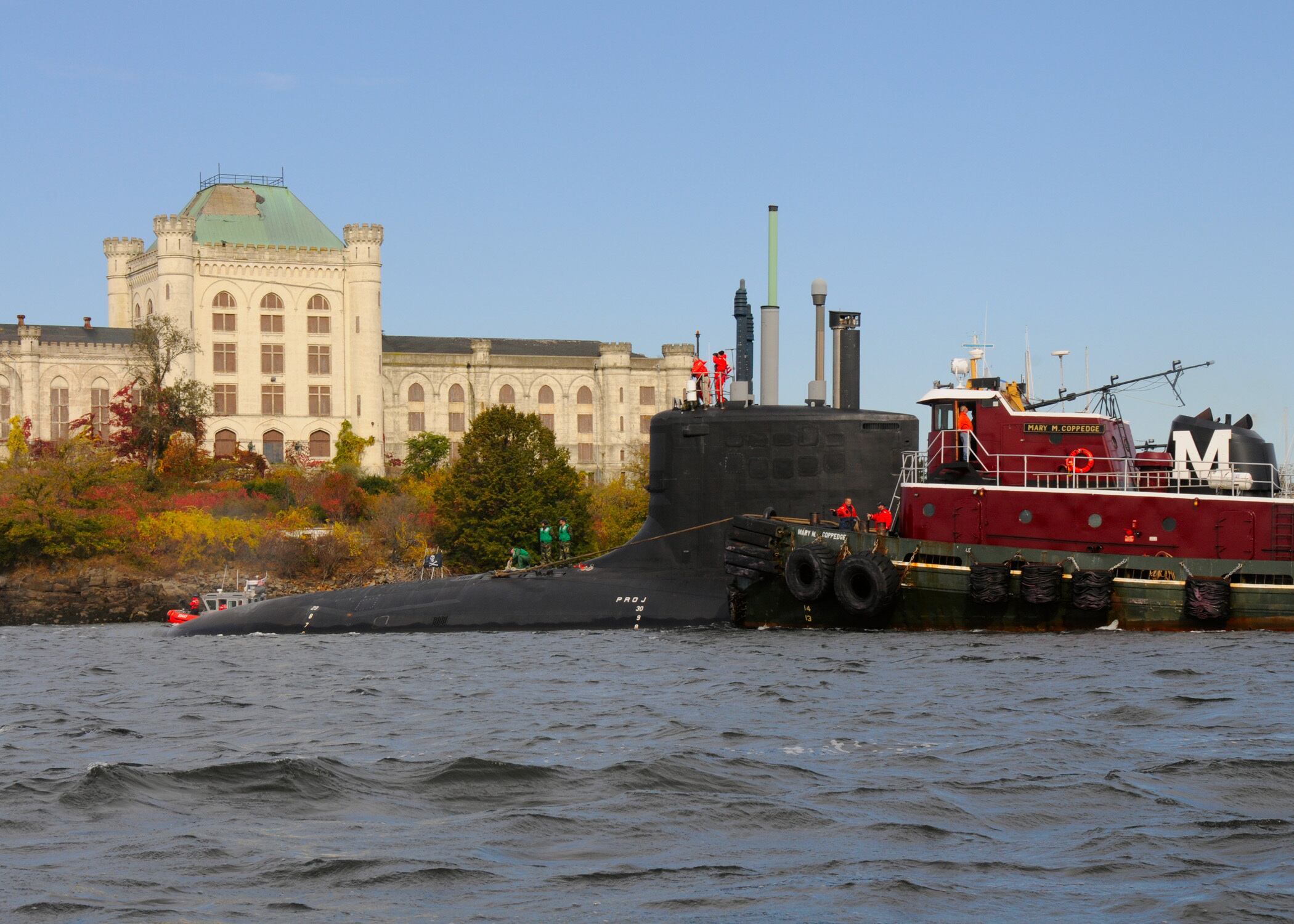KITTERY, Maine — The turreted fortress that once served as a Navy prison has fallen into disrepair after four decades of disuse, and it appears that nothing is going to change anytime soon.
The Navy abandoned its third attempt to enlist the private sector to redevelop the shuttered prison.
For now, the Navy has no plans for its future use, meaning it'll continue to languish in the elements that have taken a toll since the prison's closing in 1974.
The news is disheartening to some, but not surprising.
"There is a huge amount of rehab that needs to be done before the facility could be used. In the meantime, entropy continues to take its toll on this iconic building," said Peter Bowman, a retired former shipyard commandeering officer who lives in Greenland, New Hampshire.
The 265,000-square-foot structure overlooking the Atlantic Ocean at Portsmouth Naval Shipyard represents a quandary for the Navy because it's both too expensive to repair and too costly to tear down.
In the more than 60 years the prison — known as the Navy Brig — was operational, about 80,000 inmates served their time there. These days, it's slowly but surely crumbling.
Inside, floors are buckled, pipes are broken and electrical fixtures dangle. Outside, shrubbery is overgrown and windows are boarded up. Paint is peeling, and there's asbestos.
The Navy had turned to the private sector in hopes of finding a developer willing to address the problems in exchange for prime waterfront real estate. But nothing in the last two decades has come to fruition.
The first redevelopment attempt in the late 1990s proposed creating premium office space. But that plan ended with the death of New Hampshire developer Joseph Sawtelle in 2000.
Another redevelopment attempt by the Navy was abandoned in 2009.

The Virginia-class attack submarine USS New Hampshire (SSN 778) passes in front of the historic former Naval prison as she makes her way up the Piscataqua River on Oct. 19, 2008. The submarine was headed to Portsmouth Naval Shipyard in preparation for her commissioning ceremony Oct. 25, 2008.
Photo Credit: Jeremy Lambert/Navy
The latest effort, begun in 2014, came to a halt last fall when the Navy rejected three proposals by developers, according to the Naval Facilities Engineering Command in Norfolk, Virginia.
"After an open and competitive solicitation process and a thorough review of submitted proposals, the Navy was unable to conclude that an economically viable proposal meeting all Navy conditions for selection had been submitted," spokesman Todd Lyman said in a statement.
The Navy's goal was to establish a long-term business relationship with a partner who'd serve as a steward of the property while maximizing value to the Navy. Such arrangements have been successful elsewhere: Automaker Mazda has utilized a former Navy property in California, and land from the Pearl Harbor Naval complex was transformed into a shopping center. But the prison has been a tough sale.
Back in the 1950s, it was known to those who worked there as the "castle," said retired Marine Bob Hart, who served as a guard in the maximum security wing.
Hart, of North Hampton, New Hampshire, said he was disappointed when he returned a few years ago to see the extent of the damage.
"You could see the deterioration. I'm sure by now it's a lot worse. I'm sure it's in nasty condition, which is a shame," Hart said.
Another former guard, Steve Jennison, of Barrington, New Hampshire, said it was so immaculate and shiny that you could "see your face on the floor."
These days, Jennison said, the basketball court and a movie theater are virtually destroyed by leaking water. It didn't help, he said, that looters took some of the copper roof and sold it for scrap.
Breathing new life into the structure is an uphill battle with numerous obstacles, not the least of which is concern about shipyard security. The types of businesses are restricted because the prison is located on an active-duty Navy shipyard that overhauls nuclear submarines.
The structure is eligible for listing in the National Register of Historic Places, and renovations would have to comply with the federal government's standards for historic preservation.




